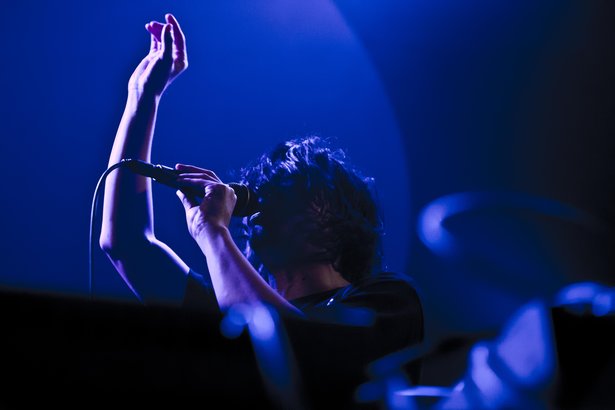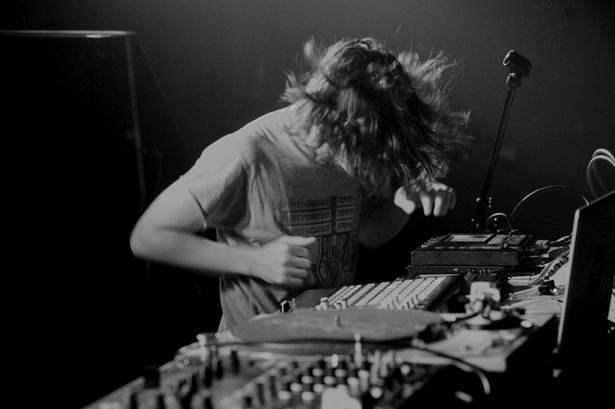Modern music technology aims to break down the barriers between intuitive human expression and the infinite possibilities computers can bring. It’s about creating a freewheeling feedback loop between human and machine – a loop perfectly displayed by Ryo Fujimoto’s incendiary performance on the Japanese streaming platform Dommune. Using beatboxing, extended vocal techniques, Live and some Kaoss Pad mayhem, Fujimoto gets to an elevated performative state that will have you rethinking how expressive a laptop performance can be. Needless to say we were intrigued, so we asked Fujimoto to unpack his methods.
Ghost in the Machine: Ryo Fujimoto on Dommune

In your Dommune set you’ll take a sound and chop it up into tiny bits, or take a tiny sound and extend it to infinity. What do you like about this technique?
Actually, I work in both ways. Each method has its own beautiful “story” and I really can’t divide them. First of all, I listen to and feel the sound, like reading a book, to see the elements contained in it. Then I picture the final design. If I manage to build an image from that tiny sound, I would start creating a story from there. If not, I would switch to the alternative method and give it a try.
I create pieces through electronics, beatboxing, or poetry reading to name a few, and I don’t have any concrete rules there. For example, if I felt the need to practice playing a saxophone, I would start doing it right away. I would use and practice anything if that helps me to reach the goal I imagine. Everything is OK to me.

Ryo Fujimoto’s free-flowing live performance
Your beatboxing and production style seem to be closely related by their frenetic, pace and stark contrasts of space and density. Are you trying to emulate beatboxing with your productions? Or do you beatbox to imitate your production style?
I’ve never thought about it, thanks for giving me the opportunity to do so! Perhaps, to me, beatboxing functions as an instrument just like an electronic device. Beats, melodies, poems, or something instinctive – it changes the function feely according to the time and circumstances.
Your style is also marked by disruptions. You’ll be running along with a liquid flow, then you’ll descend into glitched-out mayhem. Why do you use these jarring changes?
Because I enjoy something unexpected. And I don’t like something “boring”, although I like to meditate. I always think I would like to play a sound as if it were a human being – a sound comes out from a speaker after going through a lot of changes. Every living thing will come to an end by its death, and to me, a live set is identical to a living thing. Whether it comes to an end in explosion or in deep silence, that is not so important to me. What’s important to me is, the sound of the live set accepts the changes during the performance, no matter how extraordinary and unusual the changes are. Sounds are my creation, my children so to speak. I would like to play and see an end to it.
There seems to be something tense and personal running throughout the performance. Do you like to keep this narrative ambiguous?
Yes. This is one of the stories I experience in my life – it is a question and sometimes a warning. There is no one perfect answer in this world. If you give up showing your feelings when you’re trying to tell something to others, the message won’t come across. We all have our own way of feeling and thinking. Most of us do not possess a supernatural ability to understand everything.
I wish that my feeling and thinking, basically everything, comes across. Of course, I wouldn’t obtrude, and I do understand that sometimes my idea won’t get accepted. I am also aware that my works were given a mixed reception, and I think that’s only natural and it’s a good thing. I regard this is another kind of communication through music.
All I want to know is: What do people feel when they listen to my music?
Keep up with Ryo Fujimoto on his website.